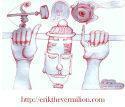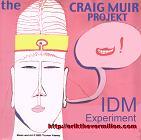Be Kind! Share with your Team, with your Family, with your Buddies!
Click The Button Now & Like This On Your Facebook Page!
Monday, November 25, 2013
Two Main Types of Hydroponic Systems
Now an increasing number of people are cultivating their crops with the use of hydroponic systems, and with really good reason. The growth rate of hydroponic plants is 30 to 50 % quicker than traditional soil based plants, developed under comparable conditions. Generally, hydroponic plants are much healthier because the essential nutrients for optimal plant growth are supplied straight to their root system. The plants don't have to search hard beneath the soil for the nutrients they need, enabling them to reduce the use of their energy for healthier and quicker development and greater yields.
If you are ready to personally look into the benefits of hydroponic gardening, there are two main types of systems that you can put to use, the recirculating and run to waste system.
Recirculating System
The recirculating or recovery systems supply the nutrients and water from the main tank to the root system of the plants. The remaining nutrients are brought back to the tank which is to be used for another cycle. You can have either a recirculating system without a medium or with a medium. The most common recirculating system without a medium is NFT and aeroponics, while the common growing medium for recovery systems are rockwool, expanded clay and perlite. These types of systems are very well-known among hydroponic farmers because they are more inexpensive than the run to waste systems.
On the other hand, the use of recirculating systems also has its downsides. Because these systems maximize cycled nutrients rather than fresh and new set of nutrient mixture, it is necessary to regular inspect and correct pH and EC levels. This adds to the amount of time you will should spend in the grow room. If you neglect to observe the proper pH and EC levels, the system can get unstable. Another potential problem that you might encounter with recirculating systems is the rapid spread of contagious diseases including root rot which can quickly be moved in the entire system as a result of the re-circulation of infected water and nutrient solution.
Run to Waste System
In the non-recovery or run to waste system, water and nutrients run from the tank, to the plant roots, down to the lowest part of the pot and straight right to the ground, waste basket or catchment dish. Excess nutrients and water are thrown away and never re-circulated. The wick system is a great example of the run to waste type of hydroponic system. Despite the fact, it is more pricey to maintain than recovery type, the run to waste system offers more stable levels of pH and EC. And in case several of your plants acquire root disorder, there are minimal possibilities of cross contamination simply because the nutrient solution is not recirculated.
According to Mike Biggs, proprietor of CX Hydroponics, "There are many examples of both types of systems on the market. However, the success of any of these systems is based on the management of it. It is an excellent idea to acquire a basic understanding of hydroponics and what these systems are expected to do before you start growing."
If you are looking for more info on the best hydroponic system and supplies, simply head over to http://www.cxhydroponics.net/.















